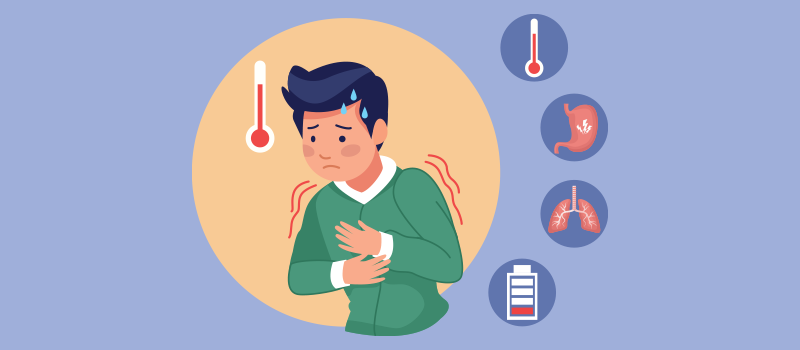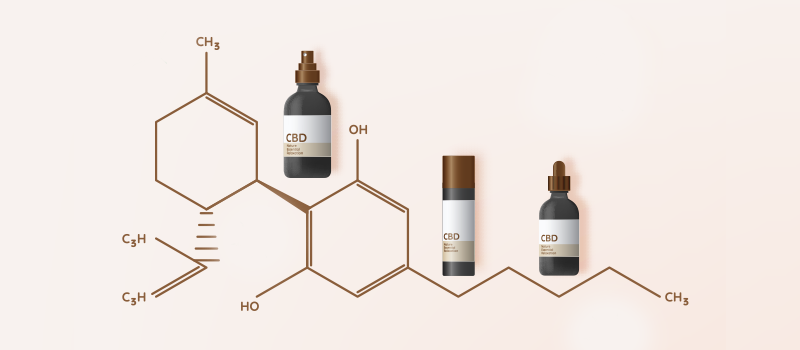What’s the Buzz
The Bee Healthy Blog
When Should You Go to the Hospital for a Fever?

A fever is an increase in body temperature above the normal value. It frequently occurs during an illness, such as a cold, flu, or urinary tract infection. Fever is a sign that something is not right with your body.
A mild fever in adults can be uncomfortable, but it can usually be managed at home with over the counter medicine. In infants and toddlers, however, even a slightly elevated temperature warrants evaluation by a healthcare professional.
Sometimes, fever is accompanied by other symptoms and could potentially be a medical emergency. Please continue reading to learn more about when you should see a doctor or go to the ER for a fever.
What is normal body temperature?
The average normal body temperature is 98.6 Fahrenheit (37 Centigrade). A fever is anything that’s higher than this value. However, it’s worth noting that this is an average value. Your normal may be a little lower or higher than the average. Therefore, a range of 97 F (36.1 C) to 99 F (37.2 C) is considered normal.
You should also know that your body temperature can vary throughout the day. It generally tends to be lower in the mornings and higher later in the day.
In most cases, fever (elevated temperature) occurs for a few days and can be lowered with over-the-counter medications. It is the body’s way of fighting off infections. However, if your temperature rises above 103 F (39.4 C) it could indicate a more serious infection that needs to be evaluated by medical professionals.
Depending on the cause of your fever, there can be accompanying signs and symptoms such as sweating, chills, shivering, headache, body aches, weakness, dehydration, irritability, and loss of appetite.
When to see a doctor for fever?
Fever is a temporary increase in body temperature. A mild fever is not a cause for concern or a reason to go to an urgent care center. However, in some circumstances, it is important to seek treatment from a doctor, nurse practitioner, physician assistant, or other healthcare professional.
Children
A rectal thermometer is the most accurate way of measuring temperature in infants and young children. Even a slight elevation in temperature is a cause for concern in infants and young children, more so than adults. You should contact your baby’s healthcare provider for:
- Rectal temperature of 100.4 F (38 C) or higher in a baby less than 3 months old.
- Rectal temperature up to 102 F (38.9 C) in a baby aged 3-6 months old with accompanying symptoms like irritability and lethargy.
- If the child’s temperature is higher than 102 F (38.9 C) for ages 3-24 months old.
- In older children, seek medical care if the child has other severe symptoms like diarrhea, stomachache, repeated vomiting, cough, cold, or others; is not responding to you; has poor eye contact; is not drinking enough fluids; is not playing or is listless.
- Call the doctor if your child has a fever that has lasted longer than one day, even if there are no other symptoms.
You should have your child evaluated immediately if the fever has lasted longer than 3 days or if the increase in body temperature has occurred after the child was left in a hot car.
You should also seek emergency care if your child has changes in appetite, changes in sleeping patterns, difficulty waking up from sleep, diarrhea, vomiting, constipation, cold symptoms, skin rash, eye discharge, difficulty walking, or difficulty breathing.
If your child has health conditions, such as a chronic medical condition, compromised immune system, or other special circumstances, ask your child's doctor for guidance on when to seek medical attention for a fever and when to go to the emergency department.
Adults
Adults can use oral, underarm, or forehead thermometers to measure temperature. If your temperature is 103 F (39.4 C) or higher, you should contact your doctor. This is considered a high-grade fever and needs to be treated immediately.
When to seek emergency care?
Adults should seek immediate medical attention by going to an emergency room if fever is 103 F (39.4 C) or higher and for fevers lasting more than two days. Urgent care is also warranted for fever that is accompanied by the following symptoms:
- Severe headache
- Stiff neck (especially pain with bending the head forward)
- Skin rash (especially a rapidly worsening rash)
- Sensitivity to bright light
- Hot, flushed skin (a sign of heatstroke)
- Chest pain or difficulty breathing
- Rapid heartbeat
- Abdominal pain
- Persistent vomiting
- Inability to eat or drink
- Pain with urination
- Mental confusion
- Inability to stay awake
- Seizures or convulsions
Summary
Fever is the body’s way of fighting off infections and inflammatory conditions and is usually not a cause for concern in adults. However, a higher fever of 103 F (39.4 C) or more or a fever lasting two or more days, can indicate a serious problem and requires medical evaluation. Adults should seek emergency care if the fever is accompanied by other symptoms (listed above). In a baby or child, even a slight elevation in temperature should be evaluated. It is also worth noting that a persistent low-grade fever is usually a sign that your body is fighting off an infection or some other health issue going on.
Board-certified physicians in the emergency department can obtain a detailed health history, perform a thorough physical examination, measure vital signs, and order laboratory studies to determine the cause of your fever. Depending on the condition causing it, they can treat your fever appropriately with antibiotics, other medications, fluids, and rest.
References:











SOCIAL